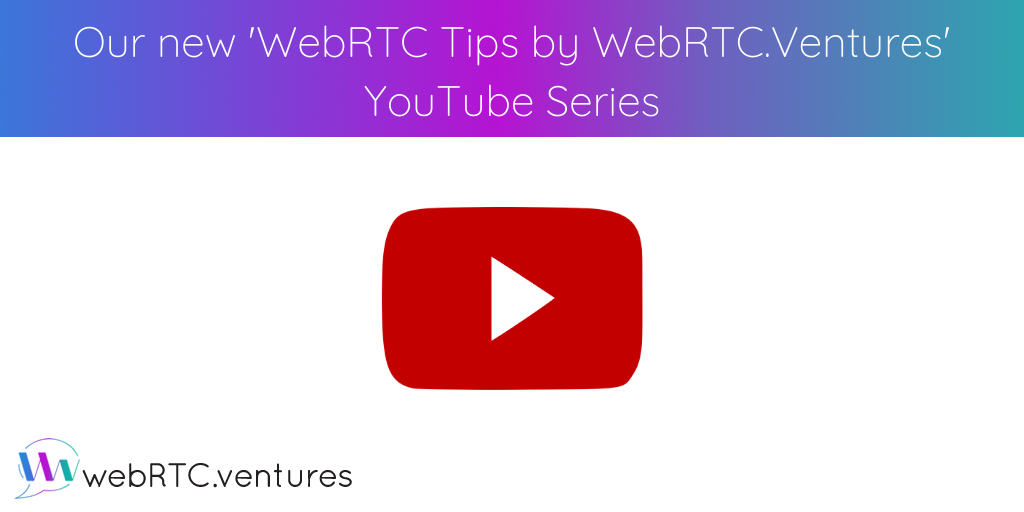WebRTC has been around for a while. But like everything in software development, there is always more to learn. Since the original launch of WebRTC in 2011 by Google, a lot has changed. As an industry, we have learned a lot about how to build and scale WebRTC in many use cases for which WebRTC was not originally designed. There have been many new commercial platforms built to help developers use WebRTC. We’ve also seen WebRTC combined with other technologies like broadcasting, IoT, and more.
All of that means the learning about WebRTC never stops, even for our team of experts at WebRTC.ventures. We learn something new with each client application that we build. Whether you’re a fellow WebRTC developer or you’re an entrepreneur or enterprise adding WebRTC to your application, there is a lot you can still learn, too!
For that reason, we’ve launched a new video series on YouTube that we’re calling “WebRTC Tips by WebRTC.ventures”. By following the series, you’ll be the first to know about new videos we’ve made sharing tips on the following areas:
- WebRTC development / coding tips for developers whether they are using WebRTC directly or via a CPaaS solution
- WebRTC architecture discussions and high-level technical topics for everyone from the CTO to application engineers
- WebRTC use case and industry discussions, where we’ll share things we are observing about the state of WebRTC application development
These videos will be relatively short and focused on specific topics, so that you only consume the content most relevant to you. All you need to do is follow the playlist on YouTube to be sure to never miss an episode! If you don’t already, you should also follow @WebRTCventures on Twitter, where we’ll promote these new videos as well as other content we develop around WebRTC.
For a sample of what these videos will be like, here are the first couple that we’ve published.
What is WebRTC? (WebRTC Tips by WebRTC.ventures)
Here, we make a quick introduction to what WebRTC is and what sort of applications may use it. Although most of you reading this post already know what WebRTC is, we still wanted to publish a basic introduction at the beginning of the series. And, it is an example of the sort of high level use case discussion that is perfect for business leaders trying to consider how they can use WebRTC in their enterprise. We’ll be making many other videos like this one over time covering different use cases and best practices in the use of WebRTC in different industries.
What are STUN and TURN servers? (WebRTC Tips by WebRTC.ventures)
In our second video, we cover one of the most common questions we get from prospective clients – what are STUN and TURN servers, and do I need them in my application? This is an example of the sort of high level architectural videos we will be producing that help explain typical WebRTC application architectures and the key components of those architectures.
These WebRTC Tips videos are in addition to others we’ve already been producing for WebRTC Live, where we interview WebRTC thought leaders on technical and industry topics, some of our past conference presentations, as well as other more technical videos from our engineering team that we use for internal training on WebRTC and VOIP development.
We truly hope that you enjoy these videos. Don’t forget to check out the others already up and follow our WebRTC Tips playlist for the many more to come. We welcome topic ideas! Just leave a suggestion in the YouTube comments or on Twitter.
Do you need an experienced development team to build your own custom live video application using WebRTC? Contact us today.











